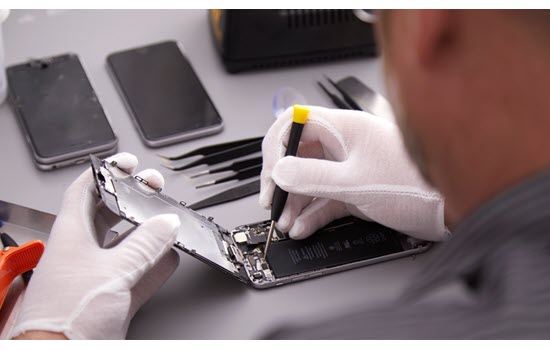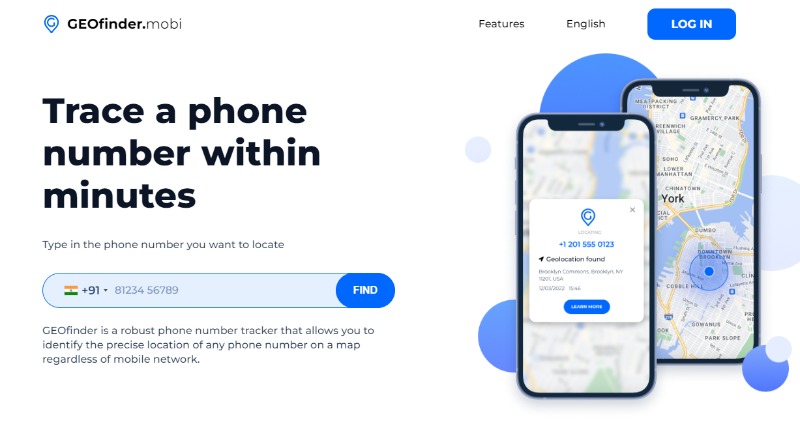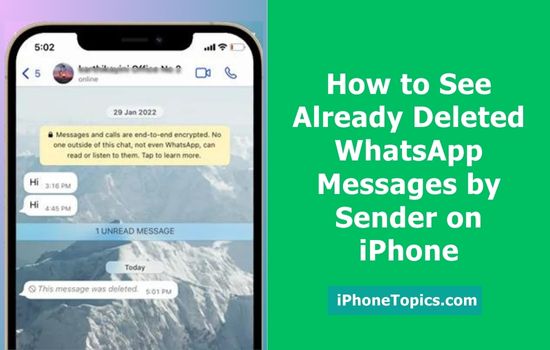
iPhone repair has become increasingly more challenging with each new model release. As Apple continues innovating with new design elements, proprietary components, and software locks, both DIY and professional iPhone repair requires specialized tools, training, and workarounds.
Apple's tight control over repairs also limits options for third-party and independent repair shops. Advocates argue this reduces consumer choice and the ability to fix devices independently. But Apple claims restrictive repairs maintain high safety, quality, and security standards.
iPhone Repair Gets Increasingly Challenging with Each New Model
Since the first iPhone launched in 2007, Apple has regularly released new models each year with significant design changes. This constant innovation provides fresh features but also complicates repair:
- Touch ID – Introduced on the iPhone 5S in 2013, the Touch ID fingerprint sensor is delicate, making screen repairs tricky. The home button is paired to the phone and won't work if replaced by a third party.
- Water resistance – Added with the iPhone 7 in 2016, water sealing adhesive makes opening the phone difficult. Components like the battery are glued, requiring heat and prying to remove.
- Proprietary pentalobe screws – iPhone screws switched from typical Phillips to harder-to-open pentalobe screws starting with the iPhone 4. Special screwdrivers are required.
- Soldered components – Important parts like storage chips, microphones and front camera sensors are now soldered to the logic board, requiring full board replacement if damaged.
- Software locks – Apple pairs components like the battery, screen, and camera to the device. If replaced by a third party, they may not work properly until Apple authenticates them.
As a result, each iPhone generation presents new hurdles for repair technicians to overcome. Simple fixes like cracked screen and battery swaps have become complex, multilayered procedures requiring specialized tools and training.
New Design Elements That Complicate iPhone Repairs
Apple's relentless design innovation results in iPhones that are sleek and user-friendly. But these design changes also make DIY and third-party repairs more difficult:
Touch ID Fingerprint Sensor
- Introduced on iPhone 5S in 2013, positioned on the home button.
- Delicate ribbon cables are easily torn if screen isn't removed properly.
- Touch ID paired to the motherboard, won't work if replaced by third party.
- Adds complication and cost to screen repairs.
Water Resistance
- First appeared on iPhone 7 in 2016, rated for submersion up to 1 meter for 30 mins.
- Waterproof adhesive makes opening phone challenging without heat gun. Needs resealed after.
- Components like battery now glued down, requiring prying to remove and replace.
- Added chance of liquid damage to internal components. Difficult to repair. Professional repair services like FIXNOW are better equipped to handle water damage and other advanced issues.
Proprietary Pentalobe Screws
- iPhone screws switched from typical Phillips to harder-to-open pentalobe screws.
- Special screwdrivers needed to open iPhone 4 and later models. Added cost and hassle.
- Makes simple battery replacements require specialized tools.
- Pentalobe screws not easily obtained by average consumers for DIY repair.
Soldered Components
- Parts like storage chips, charging ports, and cameras now soldered to logic board.
- Requires full expensive board replacement instead of cheaper individual part swap.
- Advanced microsoldering skills and equipment needed for DIY repair.
Software Locks
- Apple pairs components like battery, screen, and camera to each device.
- If replaced by third party, may not work properly until Apple authenticates them.
- Software diagnostic tools needed to approve and calibrate new parts.
- Allows Apple control over the repair process.
Specialized Tools and Training Needed for iPhone Repairs
The increasing complexity of iPhone design requires specialized tools, equipment, software, and training to reliably perform repairs:
Specialty Tools
- Pentalobe, Torx, and tri-point screwdrivers for proprietary screws
- Plastic opening tools – to cut adhesive and pry apart
- Heat gun – softens glue for component removal
- Suction cups – lift screen without damage
- Advanced microsoldering station – for logic board
Diagnostic Software + Programming Tools
- Apple makes proprietary software like MobileCal and Apple Service Toolkit to run diagnostics and calibrate replaced components like batteries and cameras. Only available to authorized technicians.
- JC V1S – all-in-one device programmer for resetting repaired phones
In-Depth Training
- Apple Authorized Service Provider training takes 5 days, covers schematics, troubleshooting, repair procedures.
- Online courses teach iPhone repair skills. For example:
Without the proper tools and know-how, DIYers can easily damage components and render phones unusable. Even professional independent repair shops have difficulty reliably servicing newer iPhone models without Apple's proprietary software and procedures.
Component Replacements Often Require Full Device Refurbishing
Many component swaps that required only opening the iPhone and unplugging the old part now need nearly full disassembly:
| Repair | Older iPhone Models | iPhone 8 and Later |
| Battery | Remove 2 screws and connector | Remove all screws, logic board, adhesive strips |
| Screen | Lift from chassis | Detach ribbon cables, unscrew brackets |
| Charging port | Unscrew small metal shield | Desolder and resolder USB port |
| Back glass | N/A | Heat and slice adhesive seal around perimeter |
On newer models, attempting simple repairs often spirals into a complex process:
- Battery – To prevent damage, need to remove logic board, bracket shields, disconnect multiple cables first. Significantly slower.
- Screen – Many interior parts must be detached and later reconnected in proper order. Room for error.
- Back glass – Used for wireless charging. Cracked glass needs to be heated and sliced off around entire edge to avoid damage.
Even common repairs like battery replacement require near complete disassembly. This discourages DIY repairs and makes them unprofitable for independent shops without official parts and training.
Official Apple Support and Repairs Have Gotten More Restrictive
Apple has gradually imposed more limitations on official repairs and access to genuine Apple parts:
- Apple Authorized Service Providers (AASPs) – Only shops that pay for training and equipment can perform certain warranty repairs.
- Component disabling – If Apple doesn't validate them, some 3rd party repairs disable iPhone features.
- Proprietary diagnostic tools – Apple software performs necessary setup procedures others can't.
- Parts availability – Genuine Apple components can only be ordered by authorized shops with a quota. Used officially sourced parts often required for proper functioning.
- Right to Repair battles – Apple opposes Right to Repair bills granting 3rd parties access to manuals, diagnostics, and parts.
Independent repair shops argue these restrictions limit consumer choice and affordable options for fixing iPhones. But Apple claims they maintain higher safety, quality control, and security.
Why Apple Makes iPhone Repairs Challenging
Experts suggest several reasons why Apple seems to deliberately design iPhones to discourage third-party repairs:
Aesthetic Design Choices
- Slimmer, sleeker iPhones leave less internal space to easily replace components.
- Adhesive and soldering used more to meet design goals.
- Waterproof sealing necessary for premium feel and immersion resistance.
Planned Obsolescence
- Speculation that Apple wants shorter iPhone lifespans so customers buy newest models.
- Harder repairs encourage upgrading rather than fixing old phones.
Reduce Third-Party Repair Shops
- Apple makes little profit from repairs versus new devices.
- Difficult repairs steer business from independent shops to Apple and AASPs.
User Experience Control
- Apple ensures consistent experience by limiting component options.
- Software locks force repair through Apple channels.
Safety and Security
- Apple argues restrictions protect consumers from inferior third-party components.
- Tamper-resistant design prevents unwanted access to private user data.
Regardless of motive, the result is iPhone repairs become increasingly impractical for average consumers. Even professional third-party repair shops face growing barriers.
The Right to Repair Movement and Apple Opposition
Right to Repair advocates support laws granting consumers and independent repair shops more freedom and access:
- Access to Apple's proprietary diagnostic software tools, schematics, and parts at fair prices.
- Legal right to modify devices and perform repairs without voiding warranty.
- Require Apple to make batteries, screens, and other parts available to anyone.
- Compel Apple to redesign devices to be easier to repair through standardization.
- Make it illegal for Apple to lock down software to blocks third-party repairs.
Apple argues Right to Repair legislation would:
- Reduce safety of unauthorized faulty repairs.
- Decrease quality control over components.
- Lead to more hacking, injuries, and scams.
- Allow counterfeit parts to flood the market.
- Cut into company profits from official repairs.
The battle between advocates seeking repairability and Apple trying to protect control continues as more states propose Right to Repair bills.
Outlook for the Future of iPhone Repairs
It's unclear whether increasing challenges to iPhone repair will persist in future models:
- Will Right to Repair make progress? If laws require Apple to ease restrictions, repairs could become easier. But Apple will likely resist or find workaround restrictions.
- Will Apple redesign with repair in mind? Some evidence like removable batteries in iPhones 12-14 points to slightly increased repairability. But major changes seem unlikely.
- Will pressure lead Apple to compromise? As customers and governments demand change, Apple may voluntarily make limited concessions without losing full control.
- Can independent repair adapt? Shops will continue developing workarounds to Apple's repair blocks. But this greatly increases their costs.
In summary, performing reliable, cost-effective, and convenient iPhone repairs will likely remain challenging. Apple shows little sign of fundamentally changing their restrictive design approach. At best, limited improvements may emerge through Right to Repair progress and consumer/regulator pressure. But significant barriers persist for the foreseeable future.
Conclusion
As each iPhone generation brings advancements like waterproofing, proprietary screws, soldered parts, and software locks, both DIY and professional iPhone repair become more challenging. Apple's tight control over repairs also limits options for third-party repair shops, reducing consumer choice.
Right to Repair advocates are battling Apple to make iPhones easier to fix independently. But Apple will likely resist any major changes that reduce their profits and oversight. While limited improvements are possible, iPhone repair will likely continue getting more difficult overall unless Apple fundamentally changes their restrictive repair design and policies.


